- Step-by-step procedures
- Estimated completion time
- Resources labeled by icons






 direct teachers to the piece of content named in the procedures
direct teachers to the piece of content named in the procedures - Print-ready pages as indicated by
 are available as PDFs for download
are available as PDFs for download
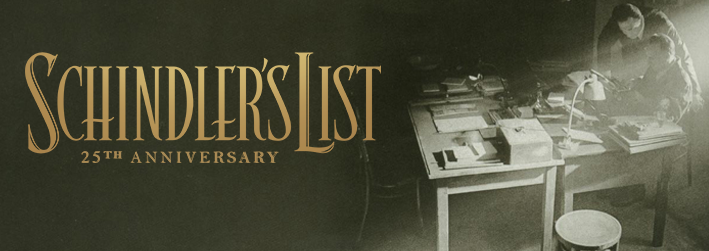
In honor of Universal Pictures’ rerelease of Schindler’s List, Echoes & Reflections has created a short, classroom-ready Companion Resource, that will help educators to provide important historical background and context to the film, as well as explore powerful true stories of rescue, survival, and resilience with their students.
Additionally, the following videos, recorded at Yad Vashem, feature Schindler survivors who speak of the impact Oskar Schindler had on their lives.
EVA LAVI TESTIMONY
NAHUM & GENIA MANOR
The posters feature the powerful words and experiences of Holocaust survivor and memoirist Elie Wiesel, Holocaust survivor Kurt Messerschmidt, and Anne Frank rescuer, Miep Gies. Each poster promotes meaningful conversation and reflection in the classroom, whether in person or in a virtual setting, and inspires students with powerful human stories of the Holocaust that can continue to guide agency and action as a result of studying this topic.
To support you in these efforts, we have also compiled several suggested classroom activities from teachers in our network that may be of use and interest.
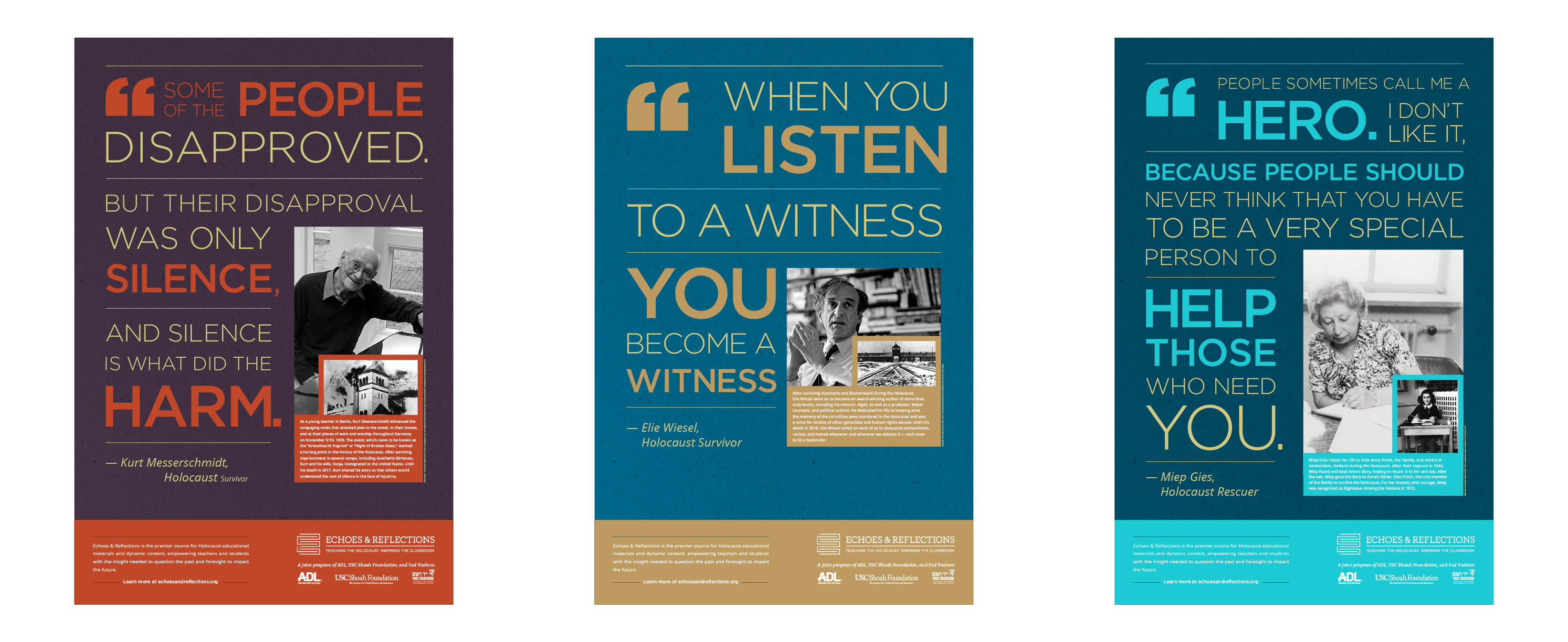
Please fill out the form below to access and download your PDF posters.

USC Shoah Foundation’s first podcast, We Share The Same Sky, seeks to brings the past into present through a granddaughter’s decade-long journey to retrace her grandmother’s story of survival. We Share The Same Sky tells the two stories of these women—the grandmother, Hana, a refugee who remained one step ahead of the Nazis at every turn, and the granddaughter, Rachael, on a search to retrace her grandmother’s history.
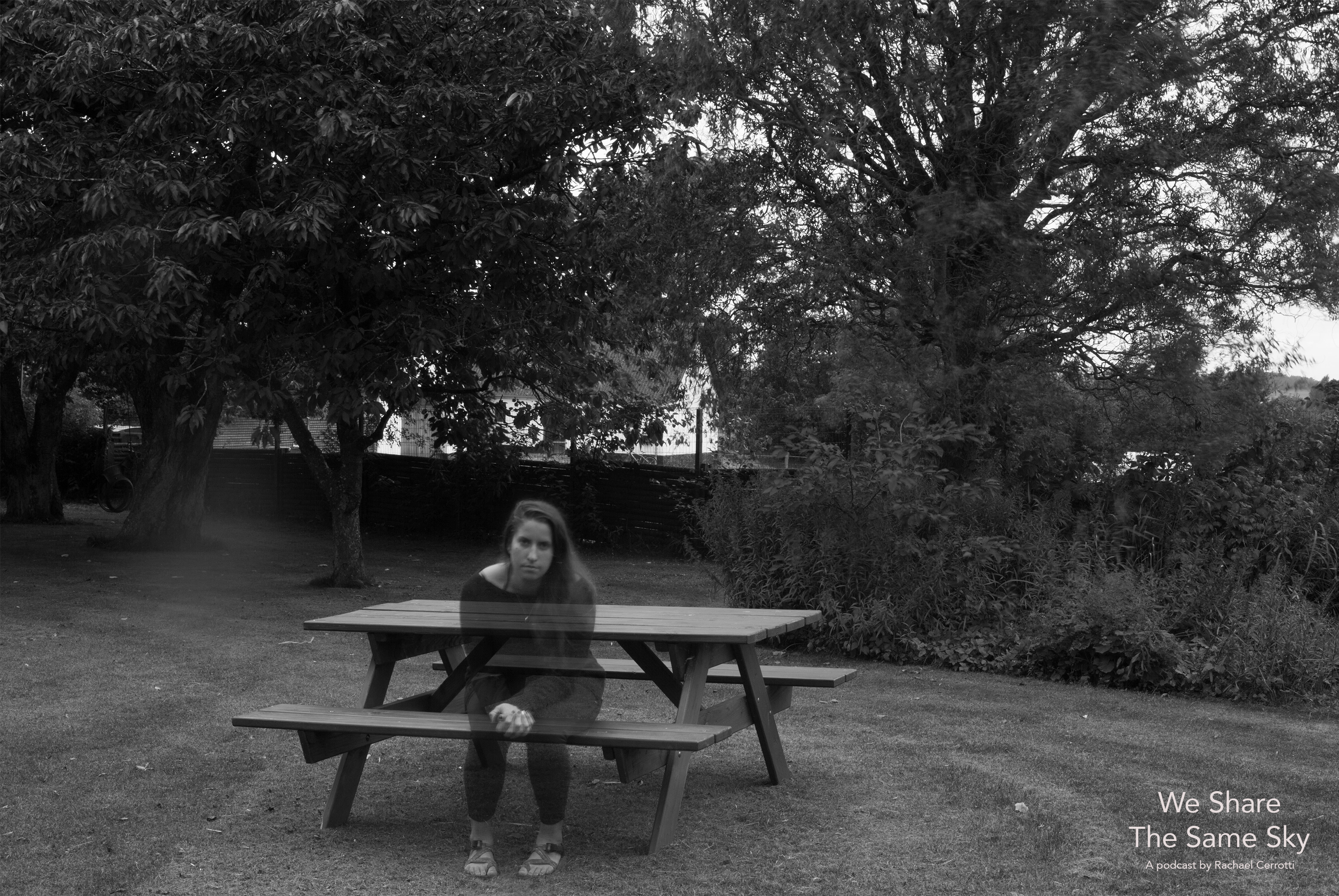
A self-portrait of Rachael while she is living on a Danish farm that is owned by the granddaughter of Hana’s foster mother from World War II. Photo by Rachael Cerrotti, 2017
In order to enhance its classroom use, USC Shoah Foundation and Echoes & Reflections have created a Companion Educational Resource to support teachers as they introduce the podcast to their students. This document provides essential questions for students, as well as additional resources and content to help build context and framing for students’ understanding of the historical events addressed in the podcast.
Access to the podcast, as well as additional supporting materials—including IWitness student activities, academic standards alignment, and general strategies for teaching with podcasts—can all be found at the We Share The Same Sky page in IWitness.
Note: Due to the subject nature, the podcast is appropriate for older students, grades 10-12. As always, teachers should review the content fully in advance to determine its appropriateness for their student population.

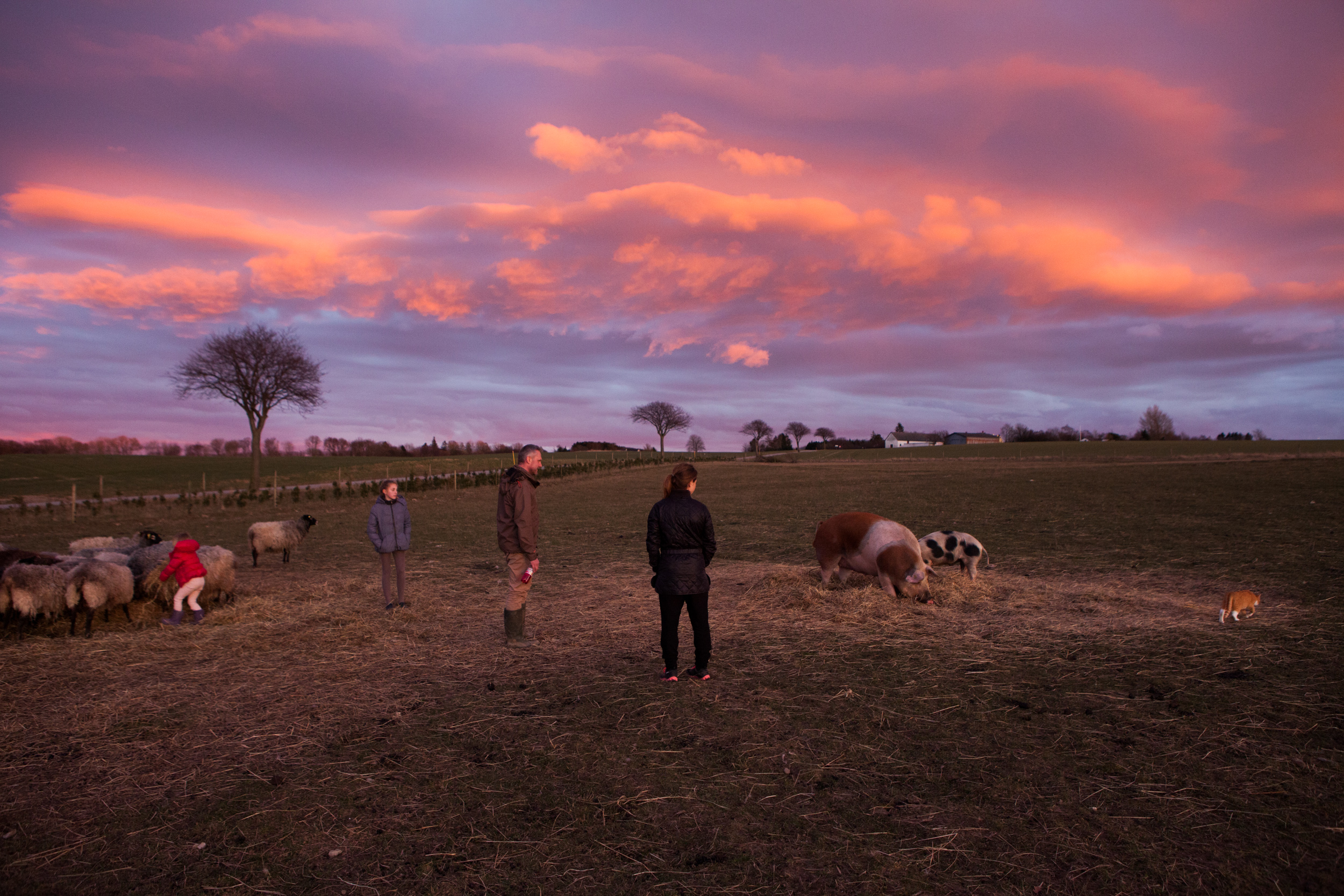
After many years of research and digitizing the archive her grandmother left behind, Rachael set out to retrace her grandmother’s 17 years of statelessness. Her intention was to travel via the same modes of transportation and to live similar style lives as to what her grandmother did during the war and in the years after. That meant that when she got to Denmark, she moved to a farm. Rachael moved in with the granddaughter of her grandmother’s foster mother from World War II and traded her labor for room and board as Hana once did. This picture is from that first visit in the winter of 2015. Since this time, Rachael has spent many more months living on this farm. It is owned by Sine Christiansen and her family. Sine is the granddaughter of Jensine, one Hana’s foster mother from World War II. Photo by Rachael Cerrotti, 2015
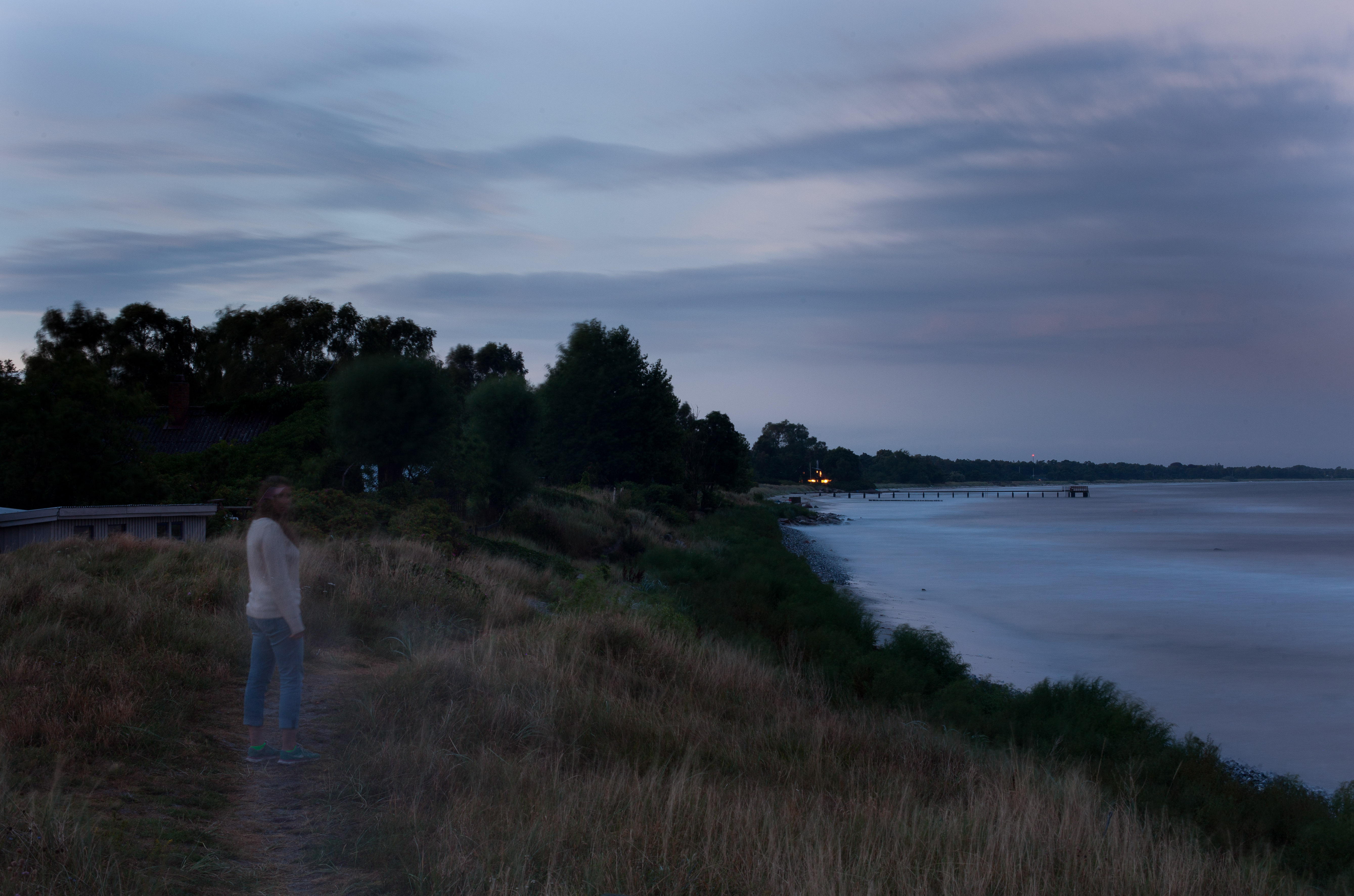
A self portrait of Rachael overlooking the exact spot in Southern Sweden where her grandmother’s refugee boat came to shore in 1943. Photo by Rachael Cerrotti, 2016


90 minutes
LESSON 4: A Model for the Escalation of Hate
In this lesson students reflect on actions that can lead to the escalation of hate in a society, and what responsibility individuals have in interrupting the cycle of hate. Students view visual history testimonies exploring the impact of escalating hate on Jewish people, and how one person took action in response. Using the “Pyramid of Hate” model, students identify examples from unit sources that represent how antisemitic prejudice escalated to violence in 1930s Germany. They then reflect on a well-known quote in order to investigate the role of individuals in standing against hate.
| 1 | Students watch testimony clips from individuals who discuss how the situation in Germany had escalated for their families: [L]Esther Clifford[/L] and [L]Alfred Gottschalk[/L]. As they watch the clips, students take notes on the Testimony Reflections handout. |


View More »
| 2 | After viewing the testimony clips, students journal and/or participate in a discussion in response to some of the following questions: |
|
|
| 3 | Students are introduced to the Pyramid of Hate handout and review the sections as a class. In pairs, students identify unfamiliar vocabulary and use the Echoes & Reflections Online Glossary and other sources to record definitions and examples on the Understanding Terms in the Pyramid of Hate handout.

|
Pyramid of Hate View More »
Understanding Terms in the Pyramid of Hate View More »
| 4 | As a class, students consider how prejudiced attitudes might, if left unchecked, eventually lead to violence and share examples that illustrate the progression through each part of the pyramid. |
| 5 | In small groups, students replicate the Pyramid of Hate model on large sheets of chart paper. They work together to identify at least three examples for each section of the pyramid using information from the visual history testimonies they have viewed, the Nazi Germany and Anti-Jewish Policy handout, and other unit source material, including the Echoes & Reflections Timeline of the Holocaust. Students write each example on a sticky note and place on the appropriate section of the Pyramid. Students may have different perspectives on the placement of examples and may decide to include the same example on more than one part of the Pyramid – they should discuss their thought process as they work toward a consensus. |
| 6 | After completing their pyramids, students post them around the room and participate in a silent gallery walk, reviewing and reflecting upon the examples their peers have identified. Students use sticky notes to post reactions or outstanding questions they may have. The class then discusses some of the following questions: |
|
|
| 7 | Students reflect on a time they did not stand up for someone in need by extending the following prompt: “I didn’t speak up because…” This can be done as a silent reflection, through individual journaling, or as a think-pair-share. |
| 8 | Students are introduced to Reverend Martin Niemöeller and his poem using the handout They Came For and further consider the role of the individual in interrupting cycles of bias or hate. Students react to the poem, making connections to their personal experiences, their study of the Holocaust, and other local or world events. They discuss some of the following questions: |
|
|
| 9 | Students watch a testimony clip from an individual who took action in response to Nazi injustice: [L]Ellen Brandt[/L]. As they watch the clip, students take notes on the Testimony Reflections handout. |

| 10 | After viewing the testimony clip, students journal and/or participate in a whole group discussion in response to some of the following questions: |
|
|
| 11 | As a summative task, students reflect on the lesson supporting questions and journal in response to the prompt below. When they are finished, they participate in a “silent pass.” Students trade their writing with a partner, silently read, and add comments using sticky notes that highlight connections to the lesson’s themes. Students’ writing can be collected to check for understanding of concepts. |
Write your own version of the Niemöeller text expressing your feelings about a current-day situation related to the escalation of bias or hate. The topic can be a personal experience or a reflection on a community, national, or global event. Start with “I/we/they didn’t speak up because…” Consider the following as you write:
How do events you learned about German society during the Weimar Republic relate to the present-day situation you are considering?
What is the role of the individual in interrupting the escalation of bias or hate?
The ideas below are offered as ways to extend the lessons in this unit and make connections to related historical events, current issues, and students’ own experiences. These topics can be integrated directly into Echoes & Reflections lessons, used as stand-alone teaching ideas, or investigated by students engaged in project-based learning.
| 1 | Visit IWitness (iwitness.usc.edu) for testimonies, resources, and activities to learn more about the topics covered in this unit, including the Nuremberg Laws, the Kristallnacht Pogrom, and life in 1930s Germany. |
| 2 | In 1821, Heinrich Heine wrote, “Where one burns books, one will, in the end, burn people.” Consider what Heine meant by this statement. Write an essay in which you explore the following questions: What is the danger of burning books? How, if at all, does burning books jeopardize human life? [Note: Heinrich Heine was a noted German author who converted to Christianity from Judaism in the nineteenth century. According to the Nuremberg Laws, Heine would have been considered a Jew; therefore, his books were also burned and forbidden.] |
| 3 | Research and prepare a graphic that shows the immigration of German and Austrian Jews from 1933–1939. The graphic might include the number of Jews who relocated to Israel (then known as Palestine), the United States, Canada, Latin American countries, Shanghai, Spain, and other areas of Europe; quota systems that were in place in various countries; what was needed to emigrate from Germany and Austria, etc. Be prepared to explain your findings. |
| 4 | Dr. Seuss, born Theodor Seuss Geisel, drew nearly 400 political cartoons for the New York daily newspaper PM between January 1941 and January 1943. In the cartoons, he expressed his support for the war against Hitler while criticizing the slow-to-act American political bureaucracy and organizations/politicians that were opposed to the war. Select one or more of these political cartoons, which can be found online or in Dr. Seuss Goes to War (New Press, 2001) and determine the artist’s point of view or purpose in creating the cartoon; analyze both the message and the medium; and comment on the overall effectiveness of the cartoon. |
| 5 | Research a group targeted by the Nazis other than Jewish people (e.g., homosexuals, Sinti- Roma, Jehovah’s Witnesses, people with disabilities, political dissidents). Prepare a written, oral, or multimedia report on your findings. Consult multiple sources from diverse media, such as the Echoes & Reflections Timeline of the Holocaust, as part of your research. |
| 6 | Desecrating or destroying places of worship is an all-too common form of violence in both historical and contemporary times. In the United States, the burning down of African-American churches across the South in the mid-1990s, vandalizing of mosques in the Midwest following 9/11, and recent attacks on Jewish synagogues, such as in Pittsburgh and Poway, are but a few examples. Research why places of worship are so often the targets of hate. Cite examples of recent incidents, the impact they had on local communities, and discuss the significance of this type of violence. |
| 7 | Write about a time when you spoke out against a rule or policy that you believed to be unfair. What was the situation? What caused you to act? How did others view your actions? How did the situation end? How did you feel about what you had done? |
120 minutes
LESSON 2: Anti-Jewish Policy in 1930s Germany
In this lesson students explore how the Nazis used legislation and propaganda to isolate Jews, influence German society, and escalate antisemitism. Students view visual history testimonies to learn how Jewish people were impacted by the Nuremberg Laws and rising antisemitism. They read about anti-Jewish policy and research examples of rights stripped from Jewish people. Students also examine texts on the formation of the Hitler Youth and concentration camps, and analyze Hitler’s 1939 Reichstag speech to better understand the extreme ideology that ultimately led to genocide.
| 1 | Students watch testimony clips from two individuals who discuss how they were affected by the Nuremberg Laws and growing antisemitism in Nazi Germany: [L]Herman Cohn[/L], and [L]Margaret Lambert[/L]. As they watch the clips, students take notes on the Testimony Reflections handout. |
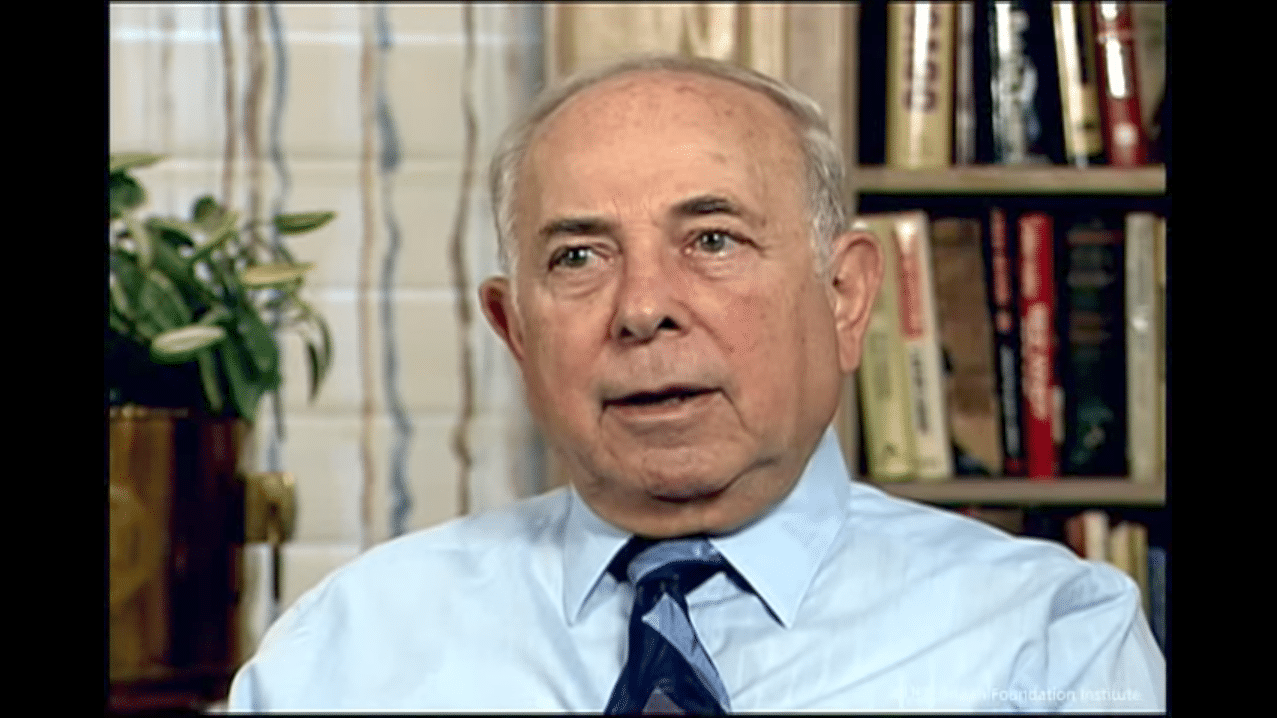
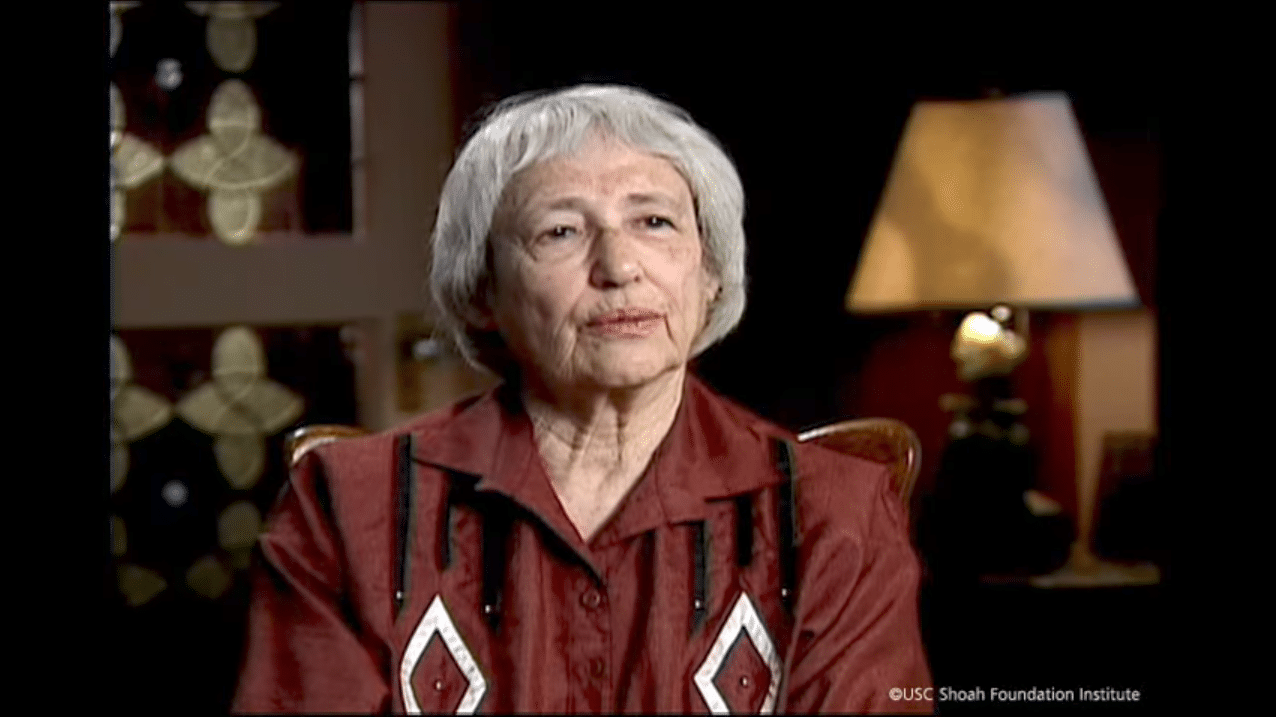
View More »
| 2 | After viewing the testimony clips, students journal and/or participate in a whole group discussion in response to some of the following questions: |
|
|
| 3 | Students read the handout, Nazi Germany and Anti-Jewish Policy, and annotate with a focus on the lesson supporting questions. They also view the photographs in the handout, Anti-Jewish Signs in Germany, depicting anti-Jewish signs displayed on roads and in towns. After reading and viewing, students engage in a follow-up activity: |
Nazi Germany and Anti-Jewish Policy View More »
View More »
Examples of Anti- Jewish Policy in Nazi Germany, 1933- 1938 View More »
- Sentence strips are posted, each containing a different right taken from Jewish people and noted in the reading (see Examples of Anti-Jewish Policy in Nazi Germany, 1933- 1938).
- Pairs or small groups are each assigned one right to research further using the Echoes & Reflections Timeline of the Holocaust (1933-38) and other online sources. They take notes on what they learn.
- The class reconvenes and pairs/groups each report back on one significant finding. As they do, they pull down the corresponding sentence strip, physically representing the “stripping” or loss of rights for Jewish people.
- As students pull down the strips, they reflect on how each right corresponds with the rights they identified during the What Rights Are Most Important to Me? exercise.
| 4 | As a whole class, students discuss the effects of anti-Jewish policy and the cumulative stripping of rights of German Jews using some of the following questions: |
|
|
| 5 | Individually or in pairs, students read and annotate the handouts, Hitlerjugend and Concentration Camps. They create a one-page summary that captures key ideas in response to the supporting question. The one-page summary includes three elements – a graphic or illustration, a quote, and a question. Students share and discuss their work in small groups or by circulating around the room and engaging in several brief partner shares. As a whole group, students discuss some the following questions: |
|
|
| 6 | Students watch a testimony clip from an individual who discusses her experience with the Hitler Youth: [L]Julia Lentini[/L]. As they watch the clip, students take notes on the Testimony Reflections handout. |
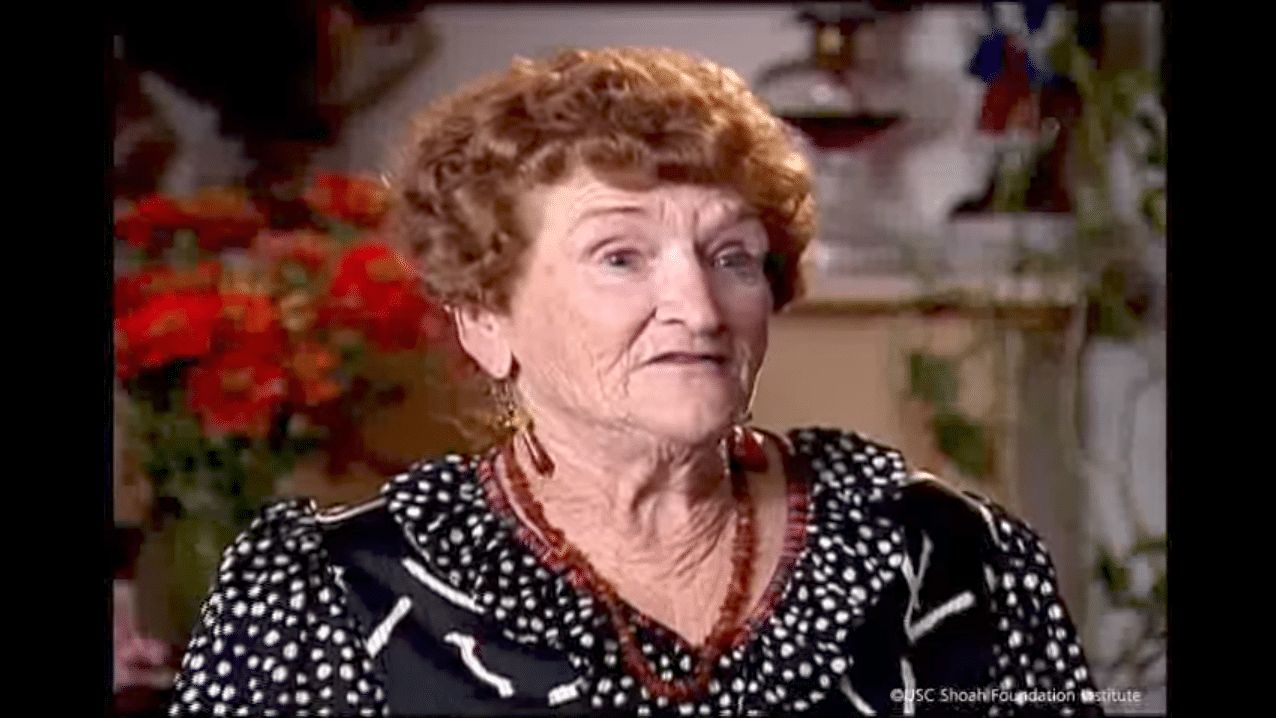
| 7 | After viewing the testimony clip, students journal and/or participate in a whole group discussion in response to some of the following questions: |
|
|
| 8 | Students receive the handout, Hitler’s Reichstag Speech, and review the introduction and directions as a class. In pairs or small groups, they analyze the excerpts and work together to complete the task. As time allows, students share their thinking with the larger group and engage in a class discussion about the things the Nazis did that supported their extreme antisemitic ideology and provided fertile ground for genocide to unfold. (Students can view video of Hitler delivering the speech here.) |
| 9 | As a summative task, students complete a “quick write or draw,” referring back to the lesson supporting questions. They fold a sheet of paper in half and label one side 1933 and the other 1939. They write or sketch at least three ideas/representations in each column that convey how the situation in Germany changed and escalated for Jewish people during the six-year period. Students should use evidence from lesson sources to arrive at their representations. As time allows, students share their writing/illustrations with a partner. Student work can be collected to check for understanding of concepts. |
90 minutes
LESSON 3: The Kristallnacht Pogrom – “Night of Broken Glass”
In this lesson students learn about the Kristallnacht Pogrom and consider how this pivotal event was both a culmination of Nazi antisemitic policy and a turning point that changed the course of future events. Students engage in a photo analysis and view visual history testimonies that provide background on the pogrom. They then engage in a station activity in which they analyze several primary sources that help deepen their understanding of the Kristallnacht Pogrom.
How was the Kristallnacht Pogrom both a culmination of antisemitic Nazi policy and a turning point in the antisemitic campaign against the Jewish people?
NOTE: Do not review the supporting question with students until after Step 2 so that the topic of the photo analysis is not revealed prematurely.
| 1 | The following photograph is projected (without revealing the title or identifying information): Frankfurt, Germany, Burning of the Boemestrasse Synagogue, Kristallnacht, November 1938. In small groups, students complete the See-Think-Wonder exercise by discussing the photograph and recording their responses on the handout. |
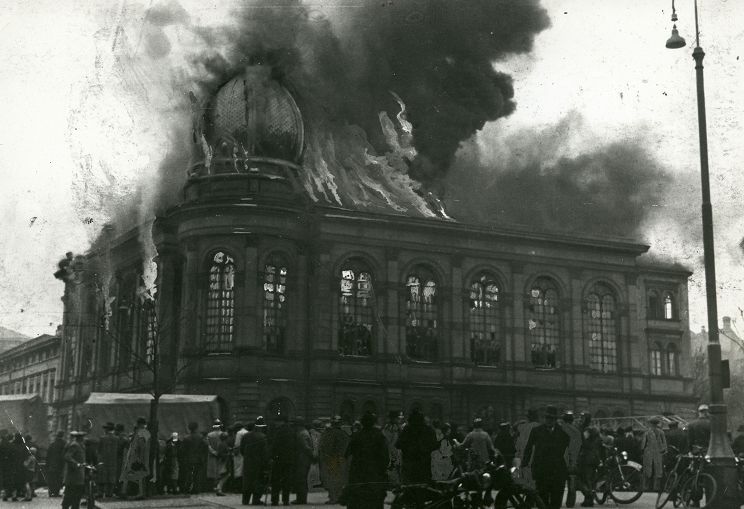
See-Think-Wonder View More »
The Kristallnacht Pogrom View More »
View More »
| 2 | The photo title and context – the Kristallnacht Pogrom – are revealed to students and they share any prior knowledge about the topic. Information from The Kristallnacht Pogrom handout is communicated as needed to fill in gaps. As a whole group, students share significant ideas from their photo analysis and discuss some of their questions in the ‘Wonder’ column. Students also consider the following: |
|
|
| 3 | Students watch testimony clips from individuals who discuss their experiences with the Kristallnacht Pogrom: [L]Esther Clifford[/L] and [L]Kurt Messerschmidt[/L]. As they watch the clips, students take notes on the Testimony Reflections handout. |
| 4 | After viewing the testimony clips, students journal and/or participate in a discussion in response to some of the following questions: |
|
|
| 5 | Students participate in a station activity in which they analyze several sources about the Kristallnacht Pogrom in order to deepen their understanding and compare different accounts and perspectives: |
Heydrich’s Instructions, November 1938 View More »
Letter By Margarete Drexler To The Gestapo View More »
Description of the Riot in Dinslaken View More »

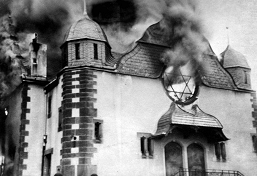
Document Analysis View More »
 IWITNESS ACTIVITY
IWITNESS ACTIVITYInfo Quest: Kristallnacht
here »
- Copies of six primary and secondary sources are placed at different stations. Five primary source documents are included here and a textbook account of the Kristallnacht Pogrom should be added for the sixth station.
- Copies of the Document Analysis handout are placed at each station. Alternatively, students can create chart paper-sized versions of the handout to record their work.
- Groups are each assigned a station to begin. They read or observe the source and fill out the information at the top of the Document Analysis handout. Students continue to review and discuss the source, adding information to the chart in response to the prompts at the top of each column.
- When groups have completed their review, they rotate to a different station. After reviewing the new source, they add information to the chart, trying not to duplicate ideas already recorded. (Students can underline ideas from previous groups that resonate for them rather than repeating them.)
- Work continues in this way until groups have read all sources (or as many as time allows).
| 6 | Students return to their original station and review the completed chart. Alternatively, the charts can be displayed so they are visible to all. The whole group participates in a discussion of some of the following questions: |
|
|
| 7 | As a summative task, students reflect on the lesson supporting questions and participate in the following exercise, entitled “The Kristallnacht Pogrom as Culmination and Turning Point”: |
- The terms culmination and turning point are defined (culmination is the highest point of something; turning point is a time at which something changes direction).
- The class is divided in half – one group is the ‘culmination’ group and the second is the ‘turning point’ group.
- On an index card, students write at least three ways that the Kristallnacht Pogrom reflected the anti-Jewish policies of the prior five years (culmination group) or how it changed the future course of events (turning point group). They draw on lesson sources (including the Echoes & Reflections Timeline of the Holocaust) to come up with their three ideas.
- Students form concentric circles (the outer circle is the culmination group and the inner circle is the turning point group). Partners face each other and share the ideas they have recorded, then rotate and continue to share as time allows. (If space doesn’t allow for circles, any form of partner sharing can be used.)
90 minutes
LESSON 4: A Model for the Escalation of Hate
In this lesson students reflect on actions that can lead to the escalation of hate in a society, and what responsibility individuals have in interrupting the cycle of hate. Students view visual history testimonies exploring the impact of escalating hate on Jewish people, and how one person took action in response. Using the “Pyramid of Hate” model, students identify examples from unit sources that represent how antisemitic prejudice escalated to violence in 1930s Germany. They then reflect on a well-known quote in order to investigate the role of individuals in standing against hate.
| 1 | Students watch testimony clips from individuals who discuss how the situation in Germany had escalated for their families: [L]Esther Clifford[/L] and [L]Alfred Gottschalk[/L]. As they watch the clips, students take notes on the Testimony Reflections handout. |


View More »
| 2 | After viewing the testimony clips, students journal and/or participate in a discussion in response to some of the following questions: |
|
|
| 3 | Students are introduced to the Pyramid of Hate handout and review the sections as a class. In pairs, students identify unfamiliar vocabulary and use the Echoes & Reflections Online Glossary and other sources to record definitions and examples on the Understanding Terms in the Pyramid of Hate handout.

|
Pyramid of Hate View More »
Understanding Terms in the Pyramid of Hate View More »
| 4 | As a class, students consider how prejudiced attitudes might, if left unchecked, eventually lead to violence and share examples that illustrate the progression through each part of the pyramid. |
| 5 | In small groups, students replicate the Pyramid of Hate model on large sheets of chart paper. They work together to identify at least three examples for each section of the pyramid using information from the visual history testimonies they have viewed, the Nazi Germany and Anti-Jewish Policy handout, and other unit source material, including the Echoes & Reflections Timeline of the Holocaust. Students write each example on a sticky note and place on the appropriate section of the Pyramid. Students may have different perspectives on the placement of examples and may decide to include the same example on more than one part of the Pyramid – they should discuss their thought process as they work toward a consensus. |
| 6 | After completing their pyramids, students post them around the room and participate in a silent gallery walk, reviewing and reflecting upon the examples their peers have identified. Students use sticky notes to post reactions or outstanding questions they may have. The class then discusses some of the following questions: |
|
|
| 7 | Students reflect on a time they did not stand up for someone in need by extending the following prompt: “I didn’t speak up because…” This can be done as a silent reflection, through individual journaling, or as a think-pair-share. |
| 8 | Students are introduced to Reverend Martin Niemöeller and his poem using the handout They Came For and further consider the role of the individual in interrupting cycles of bias or hate. Students react to the poem, making connections to their personal experiences, their study of the Holocaust, and other local or world events. They discuss some of the following questions: |
|
|
| 9 | Students watch a testimony clip from an individual who took action in response to Nazi injustice: [L]Ellen Brandt[/L]. As they watch the clip, students take notes on the Testimony Reflections handout. |

| 10 | After viewing the testimony clip, students journal and/or participate in a whole group discussion in response to some of the following questions: |
|
|
| 11 | As a summative task, students reflect on the lesson supporting questions and journal in response to the prompt below. When they are finished, they participate in a “silent pass.” Students trade their writing with a partner, silently read, and add comments using sticky notes that highlight connections to the lesson’s themes. Students’ writing can be collected to check for understanding of concepts. |
Write your own version of the Niemöeller text expressing your feelings about a current-day situation related to the escalation of bias or hate. The topic can be a personal experience or a reflection on a community, national, or global event. Start with “I/we/they didn’t speak up because…” Consider the following as you write:
How do events you learned about German society during the Weimar Republic relate to the present-day situation you are considering?
What is the role of the individual in interrupting the escalation of bias or hate?
The ideas below are offered as ways to extend the lessons in this unit and make connections to related historical events, current issues, and students’ own experiences. These topics can be integrated directly into Echoes & Reflections lessons, used as stand-alone teaching ideas, or investigated by students engaged in project-based learning.
| 1 | Visit IWitness (iwitness.usc.edu) for testimonies, resources, and activities to learn more about the topics covered in this unit, including the Nuremberg Laws, the Kristallnacht Pogrom, and life in 1930s Germany. |
| 2 | In 1821, Heinrich Heine wrote, “Where one burns books, one will, in the end, burn people.” Consider what Heine meant by this statement. Write an essay in which you explore the following questions: What is the danger of burning books? How, if at all, does burning books jeopardize human life? [Note: Heinrich Heine was a noted German author who converted to Christianity from Judaism in the nineteenth century. According to the Nuremberg Laws, Heine would have been considered a Jew; therefore, his books were also burned and forbidden.] |
| 3 | Research and prepare a graphic that shows the immigration of German and Austrian Jews from 1933–1939. The graphic might include the number of Jews who relocated to Israel (then known as Palestine), the United States, Canada, Latin American countries, Shanghai, Spain, and other areas of Europe; quota systems that were in place in various countries; what was needed to emigrate from Germany and Austria, etc. Be prepared to explain your findings. |
| 4 | Dr. Seuss, born Theodor Seuss Geisel, drew nearly 400 political cartoons for the New York daily newspaper PM between January 1941 and January 1943. In the cartoons, he expressed his support for the war against Hitler while criticizing the slow-to-act American political bureaucracy and organizations/politicians that were opposed to the war. Select one or more of these political cartoons, which can be found online or in Dr. Seuss Goes to War (New Press, 2001) and determine the artist’s point of view or purpose in creating the cartoon; analyze both the message and the medium; and comment on the overall effectiveness of the cartoon. |
| 5 | Research a group targeted by the Nazis other than Jewish people (e.g., homosexuals, Sinti- Roma, Jehovah’s Witnesses, people with disabilities, political dissidents). Prepare a written, oral, or multimedia report on your findings. Consult multiple sources from diverse media, such as the Echoes & Reflections Timeline of the Holocaust, as part of your research. |
| 6 | Desecrating or destroying places of worship is an all-too common form of violence in both historical and contemporary times. In the United States, the burning down of African-American churches across the South in the mid-1990s, vandalizing of mosques in the Midwest following 9/11, and recent attacks on Jewish synagogues, such as in Pittsburgh and Poway, are but a few examples. Research why places of worship are so often the targets of hate. Cite examples of recent incidents, the impact they had on local communities, and discuss the significance of this type of violence. |
| 7 | Write about a time when you spoke out against a rule or policy that you believed to be unfair. What was the situation? What caused you to act? How did others view your actions? How did the situation end? How did you feel about what you had done? |
democracydeportationdiscriminationGestapo
harassmentHitler Youth/ Hitlerjugend
KosherKristallnacht Pogrom
NaziNazi racial ideologyNuremberg LawspogrompropagandaReichstag
Roma
Weimar Republic
Aryanconcentration campDachau
democracydeportationdiscriminationGestapo
harassmentHitler Youth/ Hitlerjugend
NaziNazi racial ideologyNuremberg LawspogrompropagandaReichstag
RomascapegoatSD (Security Service)SS (Protection Squadron)Second ReichSintistereotypestormtrooperTreaty of Versailles
Weimar Republic





